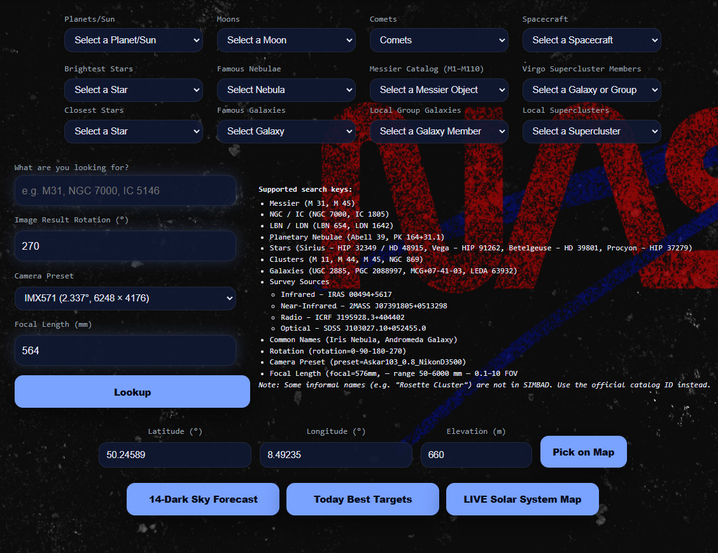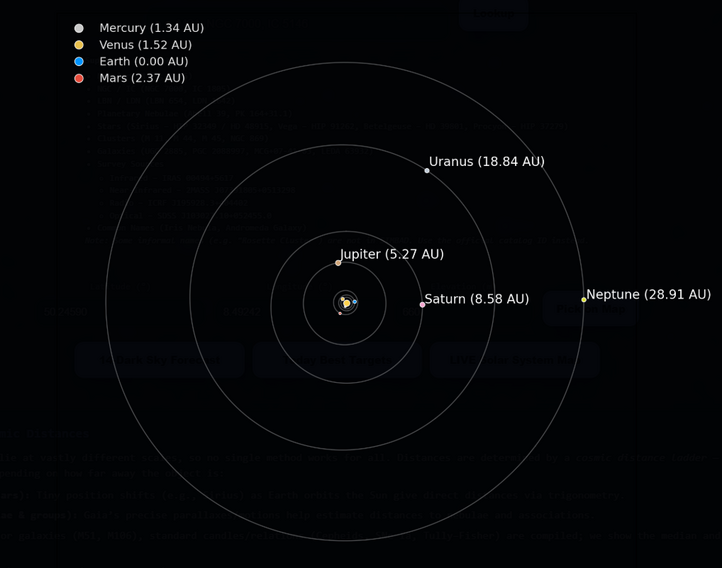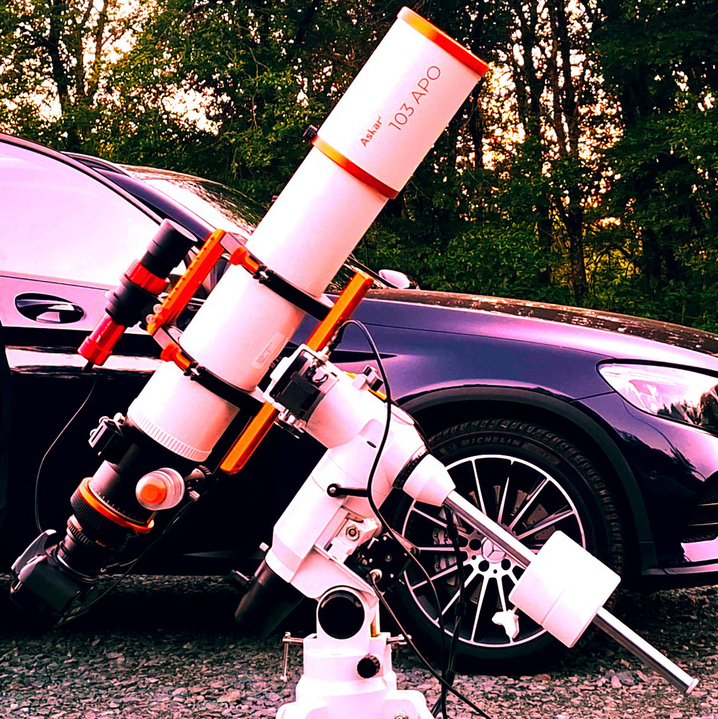
Universal Object Lookup
- Messier, NGC, IC, Caldwell, Sharpless, clusters, stars, galaxies, planets, moons, comets, and spacecraft — all searchable from a single box.
- Names and magnitudes — distances, velocities, fluxes, orbital parameters, closest approaches, ephemerides.
- One image per target for quick visual context.
- Camera framing with your setup — sensor, rotation, and focal length — computes FOV and fit for each target.
Weather Intelligence
- 14-day, hour-by-hour forecast restricted to true astronomical darkness.
- Conditions graded into a 0–100 Imaging Score — clouds, moonlight, humidity, wind, and pressure condensed into a single metric.
- Powered by Astronomical Timing for your exact position (set manually or by map), ensuring forecasts align with your true night sky.
Target Finder
- Tonight’s best deep-sky objects ranked by visibility, altitude, airmass, and angular size.
- Grades calculated using the same Astronomical Timing as the forecasts — factoring in sky darkness, moonlight, and observing windows at your chosen location.
Solar System Map
- Live, high-precision visualization of the Solar System using NASA JPL ephemerides.
- Shows real-time planetary positions and accurate elliptical orbits.
- All distances are computed relative to Earth for true observational context.
- Interactive view — zoom and pan to explore the current configuration.
How We Measure Cosmic Distances
Astronomical objects span vastly different scales, so no single method works for all. Distances are determined by a cosmic distance ladder — a hierarchy of techniques applied according to distance range:
- Parallax (nearby stars): Tiny apparent position shifts (e.g., Sirius) as Earth orbits the Sun yield direct distances through geometry.
- Gaia proxies (nebulae and stellar groups): Gaia’s precise parallaxes and proper motions provide distances to nebulae and young associations.
- NED-D (galaxies): For galaxies (e.g., M51, M106), standard-candle and empirical relations (Cepheids, Type Ia supernovae, Tully–Fisher) are compiled; we show the median value and number of estimates.
- Literature fits (clusters): Distances to clusters (e.g., NGC 346) come from isochrone fitting to stellar evolution models.
- Radial velocity (nearby galaxies): For galaxies such as NGC 3109, recession speed via Hubble’s law gives approximate distances, though local motions introduce uncertainty.
- Hubble redshift (quasars): For extremely distant sources (e.g., 3C 273), redshift z from cosmic expansion defines their cosmological distance.
Together these methods form a calibrated hierarchy: parallax anchors the nearest rungs, Gaia extends them, standard candles calibrate galaxies, and redshift reaches the edge of the observable universe.


